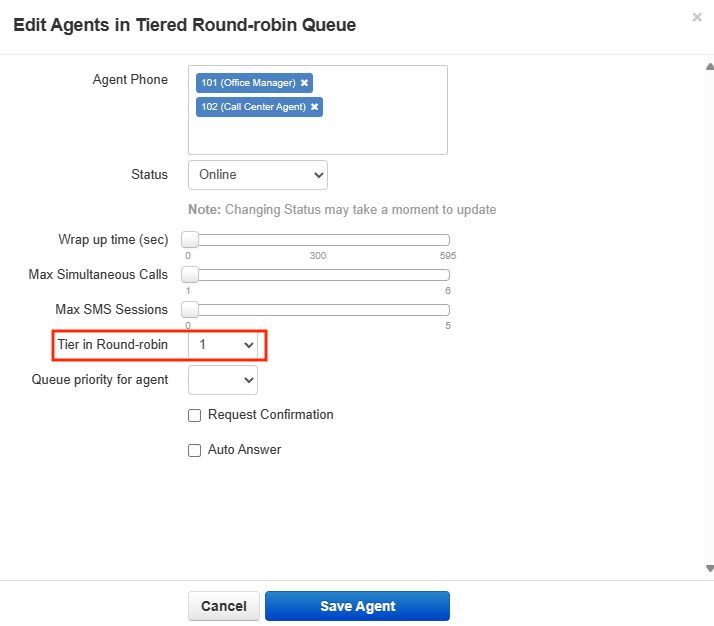Maximizing your agents' performance is a science. The Sonar Portal supports multiple call queue configurations; this article explains the difference between traditional tiered round-robin so you can better choose which is best suited for your needs.
Round-robin call routing directs callers one at a time to a list of agents based on either:
- Traditional agent activity (prioritizes whoever has been idle/inactive the longest), or,
- Tiered priority (preset agent lists).
Traditional Round Robin
Traditionally, round-robin queues distribute calls fairly among agents. Each call is sent to the longest available agent, ensuring everyone gets a chance to answer calls.
How Sonar handles traditional round-robin:
- A call comes in.
- Sonar tries to connect the call with an available agent, following an activity-based round-robin approach.
- If the first agent is unavailable, the call moves on to the second agent, and so on.
- Sonar keeps trying until an agent answers the call or an exit option is triggered (e.g., voicemail or call forwarding).
- If the call reaches the end of the last agent without being answered, it loops back to the first agent and tries again.
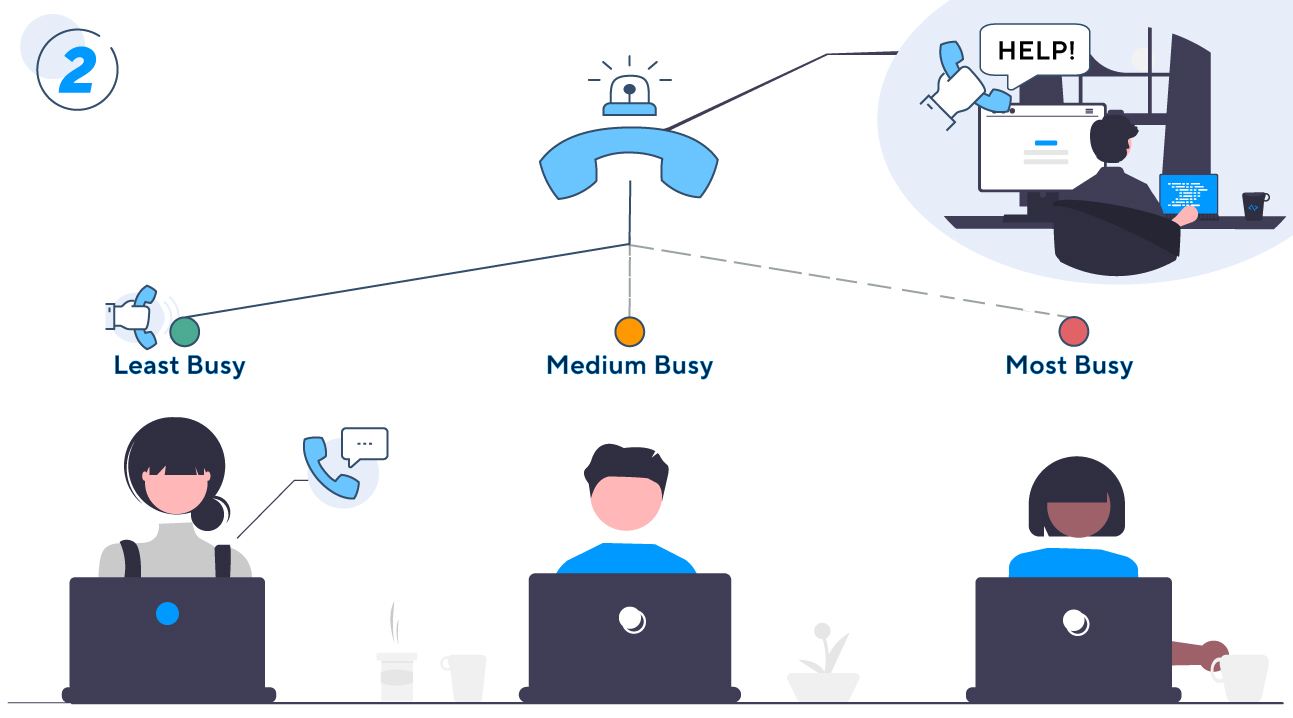
Traditional Round Robin: Benefits
The traditional round-robin feature is perfect for any department that requires equal distribution among agents. With calls based on the agent with the longest waiting time, agents can hit their targets without worrying about being the first to answer.
Equal distribution: The system distributes calls to agents in a cyclical order. Once an agent receives a call, they move to the back of the line, and the next call is directed to the next available agent in the queue.
No priority: In a traditional round-robin system, calls are distributed without considering the priority or skill set of the agent. Every agent is seen as equal in terms of handling calls.
Systematic approach: The round-robin method is systematic and predictable, which can simplify call center management and planning.
Efficiency and fairness: This approach is designed to be fair, as it aims to distribute the workload evenly among all agents, preventing any single agent from being overburdened or underutilized.
Simplicity: The traditional round-robin queue is simple to implement and understand, making it a popular choice.
Tiered Round-Robin
Tiered Round-Robin queues allow you to configure multiple teams (tiers) of agents within the same queue.
How Sonar handles tiered round-robin:
- A call comes in.
- Sonar tries to connect the call with an available agent in the first tier, following a round-robin approach.
- If no agent in the first tier is available, the call moves on to the second tier, and so on.
- Sonar keeps trying until an agent answers the call or an exit option is triggered (e.g., voicemail or call forwarding).
- If the call reaches the end of the last tier without being answered, it loops back to the first tier and tries again.
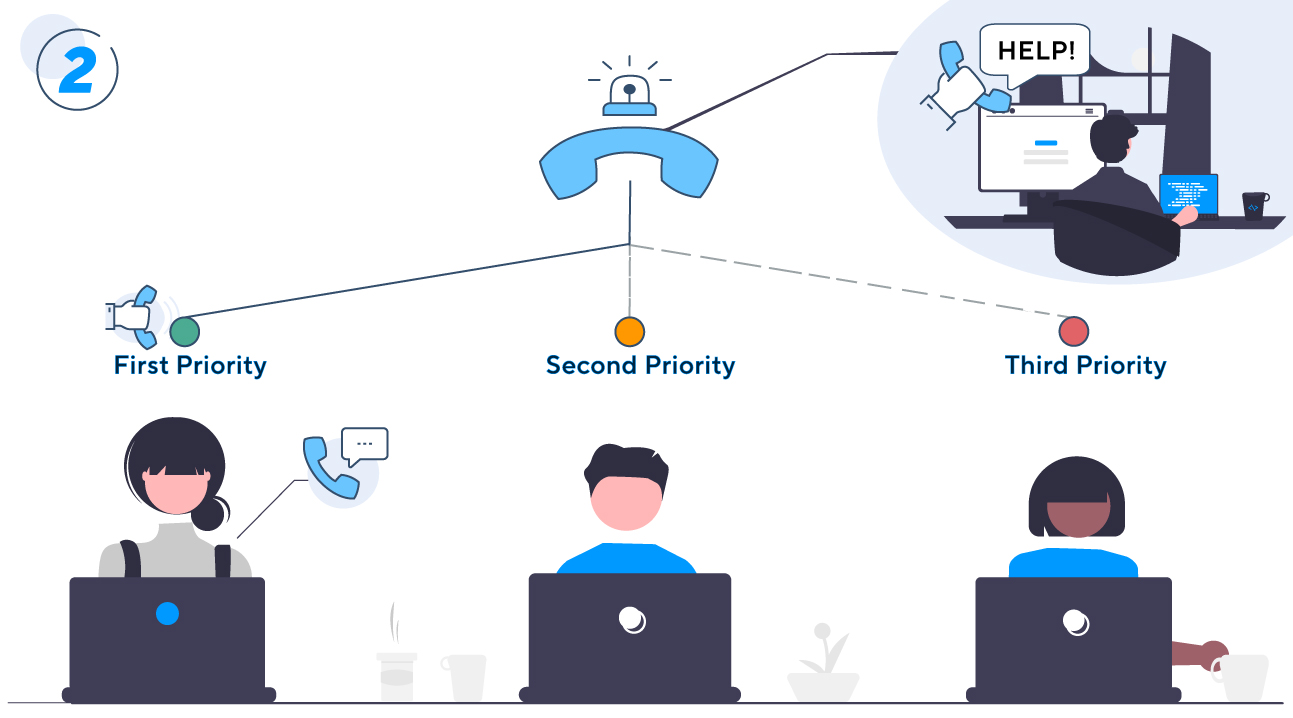
Tiered Round Robin: Benefits
The tiered round-robin feature is perfect for any department that relies on a primary team and one or more backup teams to handle calls. Previously, if you wanted calls to go to a specific team first, and then to a backup team, you had to set up unique call queues for each team, which could become cumbersome if you need multiple backup teams.
Round-robin agent groups: With a tiered round-robin, you can create agent groups for one call queue, rather than creating multiple queues or requiring additional transfers in your call flow.
Prioritize incoming calls: In a tiered round-robin system, calls are distributed to chosen agents based on the organizational priority or skill set of the agent.
Sales teams: You could have a dedicated account management team as the first tier to field calls from existing clients. If they are unavailable, the call would then go to the general sales team in the second tier, giving them a chance to help a potential new customer.
Customer support teams: Your first tier could consist of a dedicated team to answer general customer calls. A second tier could be reserved for higher-level technical support, which typically resolves escalated requests; the second-tier team can also act as a backup when the primary team is overwhelmed, ensuring customers always reach a qualified agent quickly.
How To Enable Tiered Round-Robin for Call Queues
- Navigate to the Call Queue tab. You must be in "Manage Organization/Call Center" view to access the Call Queue tab.

- Choose the queue you want to edit, or click Add Call Queue.
Ensure you are in the Basic subtab. - Select the radio button for Tiered Round-robin.
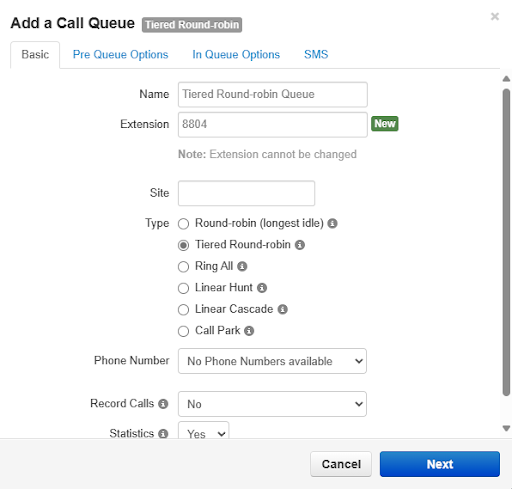
- Configure the necessary queue settings; for a full list of options, see the Call Queue Overview article.
- Remember to Save before you exit the configuration pop-up.
Success: Edit Tiered Agent Lists!
In the Call Queue list, find your new (or edited queue) and click the link under Edit Agents.

Agents are listed in priority order—with the top agent having the highest priority.
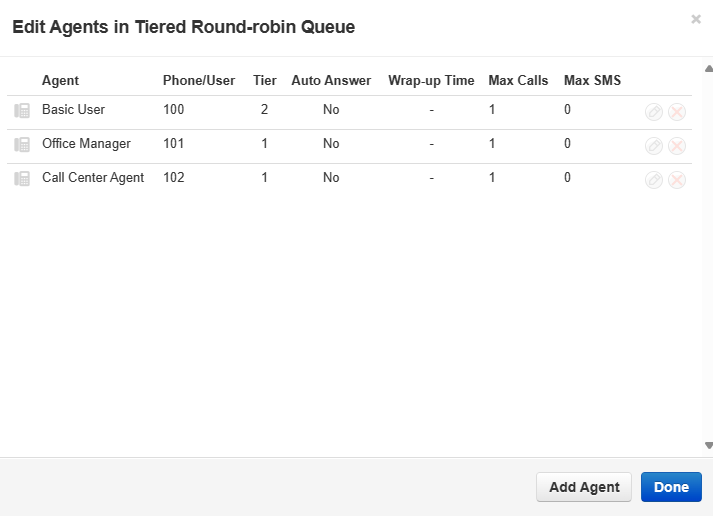
To edit agent tiers, use the Tier in Round-robin drop-down menu to designate agent tiers. Remember, you can have more than one agent in a tier group.
